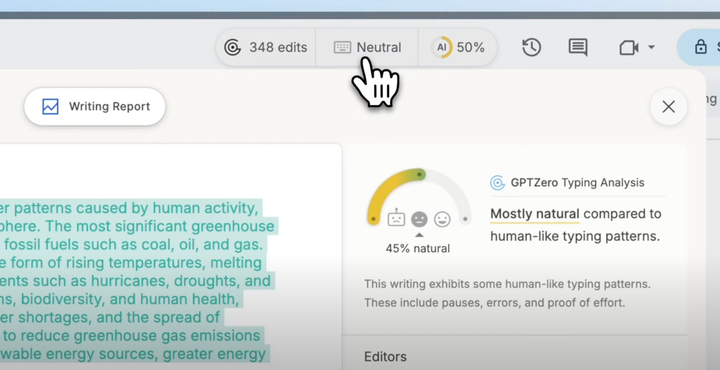Behind the Scenes: Smarter AI Detection for GPT-5
This release shows GPTZero adjusting quickly to new AI models and staying resilient to the latest changes in the AI landscape.

In a recent blog post, we detailed our largest AI detector improvement to date. We discussed training on the latest language models available, prior to the release of GPT5.
At the time of our previous release we tested our model without specifically training it on AI-generated text from GPT5. We found in our initial experiments that the GPTZero AI detector still worked well with the new OpenAI release, and we achieved a 95% success rate in detecting AI text while keeping errors (false positives) under 1%.
Since then, we’ve trained on AI-generated text from GPT5, GPT5-mini, and GPT5-nano with prompts that cover various domains, document types, and topics. We increased our performance on all 3 models. Table 1 shows our updated results.
Table 1: AI detector performance on GPT5 models with our latest AI detector trained with GPT5 data. Recall is the percentage of AI-generated documents in the benchmark that our detector correctly identified as AI. We report recall at 1% false positive rate.
With our latest model release we’re demonstrating our commitment to adapting quickly to the latest improvements in AI. Whether it’s new language model releases or new bypassers, we’re building an AI detector that stays resilient to changes in the AI landscape.
Teachers can feel confident that our latest model release will detect GPT5-generated assignments, and writers can feel confident that their writing is protected against false positives.


